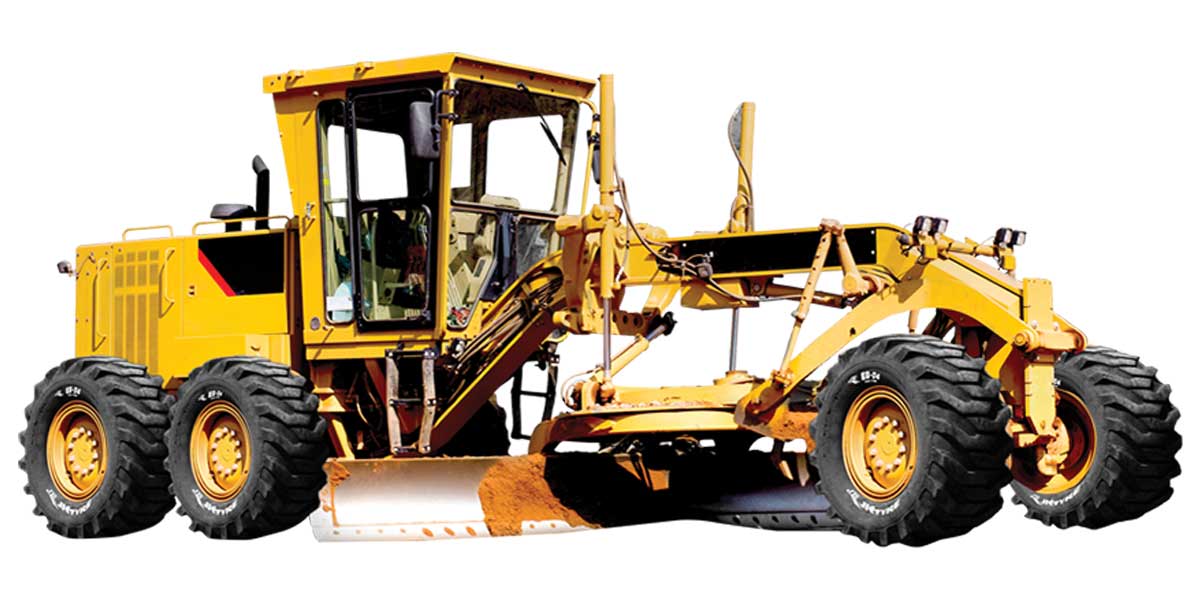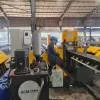Photo courtesy: JK Tyre & Industries
The Government’s recent decision to place tyre imports in the restricted list comes as big news for the tyre industry, which has long been calling for such a step.
A key reason for this call was the hardship the tyre industry has faced owing to the indiscriminate import and dumping of tyres in the country, an outcome of an inverted duty structure, says Rajiv Budhraja, Director General, Automotive Tyre Manufacturers Association (ATMA). “The import duty on the principal raw material of tyres, natural rubber (in which India is deficient) is 25 per cent, while that on tyres, a finished product, is 10-15 per cent. Under Free Trade Agreements, tyres can be imported at much lesser duty rates and, in some cases, even at a nil rate.”
Imported tyres not only hurt the domestic tyre industry but the entire value chain, including natural rubber growers, he observes.
Placing tyre imports in the restricted list will boost domestic production and simultaneously improve the prospects for domestic natural rubber and the consumption of other raw materials.
Srinivasu Allaphan, Director - Sales & Marketing, JK Tyre & Industries, also hails the announcement by the Directorate General of Foreign Trade to restrict tyre imports as a welcome step.
Better capacity utilisation
Restricting tyre imports will allow domestic manufacturers to better utilise their capacity, a very important aspect bearing in mind that domestic tyre manufacturing capacity is ahead of the demand curve.
“Huge investments of nearly Rs 50,000 crore have just been completed or are lined up in the industry,” points out Budhraja. “However, as new capacities are coming up, capacity utilisation is under pressure in view of demand slowdown and unwarranted imports. Domestic capacity utilisation could increase by 5-10 per cent depending upon the segments, if imports were checked.”
“New restrictions now requiring import licenses as per the amended policy should increase domestic production, improve capacity utilisation and maintaining levels of employment, and allow economies of scale to come into play,” agrees Allaphan.
Rajendra V Gandhi, Managing Director, GRP (a leading manufacturer of reclaimed rubber from used tyres), too, believes a cap on imports would help tyre and associated rubber manufacturers improve utilisation of installed capacity. “In recent years, some of these companies expanded their capacity expecting high growth but the economy has underperformed. I expect roughly 30 per cent of the installed capacity is lying idle.”
Interestingly, well-established Continental Tyres, in India since 2011 with a plant at Modipuram in Uttar Pradesh and sales and marketing teams across the country, does not expect the import ban to significantly impact its utilisation ratios as imports account for roughly 5 per cent of the overall domestic truck and bus tyre market, a fairly negligible contribution, according to Amit Kumar Agarwal, Product Manager, Truck and Bus Tyres, Continental Tyres. “Focusing on ‘Make in India’ best-in-class products, our utilisation ratios continue to be healthy despite the temporary slowdown on account of the pandemic.”
Good tidings
In FY 21, the tyre industry is gearing up for a contraction in demand, in view of the drop in performance of the automobile industry, which accounts for a significant part of tyre sales. In an optimistic scenario, demand for truck, bus and passenger car radials will remain flat, observes Budhraja.
Individual players appear to be more optimistic.
“While there will be an impact on FY21 results on account of the time lost during the summer of 2020, the recovery should be equally sharp once economic activity picks up,” opines Agarwal.
Allaphan expects the current economic climate to impact the tyre industry’s growth at least in the first two quarters. However, he is positive about the prospects of the farm sector backed by a good monsoon, the replacement market in the coming quarter, and demand during the festive season in the wake of the trend towards personal mobility.
“Additionally, the subdued sentiment on exports from China should present a window of opportunity for increasing long-term and short-term exports,” adds Allaphan.
JK Tyre added a feather in its cap during the pandemic in becoming the first Indian company to reach the milestone of manufacturing 20 million truck and bus radial tyres in May. That’s positive news to build on.
New business models
“The future is all about the new normal, which for our industry would mean new ways of operating and a deeper focus on more customer-oriented solutions,” says Agarwal. “Customers are looking for more assurance from manufacturers and product quality is occupying an even bigger space in buying behaviour.” Continental Tyre’s offerings that are helping to push demand include ‘Conti Assurance’, additional warranty coverage even for non-technical conditions, to give customers peace of mind. “This offer further reinforces customer confidence in the quality of the product and allows us to differentiate in an erstwhile commoditised segment,” he adds.
Recently, Bridgestone has indicated that tyre leasing might pick up in the post-pandemic period. A tyres-as-a-service model would involve the manufacturer offering a professional tyre management service to maintain the tyres of an entire fleet for a fee, instead of an outright sale.
Innovations will indeed serve the industry well.
Developments in the off-the-road tyre segment
Mining and construction contribute more than half the sales of off-highway tyres in India. Prasanta Kumar Ganguly, Head, Marketing OTR, BKT Tires, is positive about the prospects of this segment because the quality and design of tyres used in mine utility vehicles (such as haul trucks, LHD loaders, scalers, underground graders, explosive chargers, rock breakers and road headers) can help the mining industry improve its efficiency, a key need to overcome the downswing owing to the pandemic.
“Tyre tread patterns play a critical role in the performance of mining equipment,” points out Samaresh Mitra, National Sales Head - OE, Komatsu Mining Corp Group. “Tyres with the wrong tread can lead to difficulty in braking; the equipment might not handle well or slip on wet terrain. That’s why engineers focus on maximising tyre performance and protecting the investment on the equipment. Other factors like tread compound, tyre contour and tyre construction also impact performance as well as fuel consumption.”
Many off-the-road tyre manufacturers are exploring the run-flat tyre concept and have begun to expand their future manufacturing processes to include this cutting-edge technology that can help heavy-duty equipment run with more precision, and without interruption, even when punctured, observes Ganguly. This is an attempt to increase quality, safety and durability, especially when used in complex mining processes. This move will also help with tyre maintenance.
At present, Ganguly observes that a growing trend in the market for tyres for surface mining is the use of radial tyres offering unmatched tenacity and grip during the lifting of heavy-duty materials. The thick shoulder of a radial tyre protects the cabin interior from shocks and damage, making it easier to operate, especially for haul trucks and bulldozers.
In underground mining, Ganguly says, “Radial tyres are being moulded to become high-traction tyres for severe-surface underground applications. Radial tyres are strong and designed to be long-lasting and ensure optimal durability.”
“Increasing focus on compliance with the corporate average fuel efficiency norms has led off-highway tyre manufacturers to take steps to manufacture products with minimal friction, more radials that consume less fuel, lower usage of carbon black and increased use of silica,” observes Ganguly. This is a step forward to ensure a future that embraces minimal wastage, while building strong and long-lasting tyres.
What else should this segment focus on?
“India has developed a wide range of tyres for various mining machineries; but for large wheel mounted equipment deployed in mega open-cast mines, tyres still need to be imported,” observes Mitra. “This is a gap we feel would be met with rising demand for larger tyres in days to come, as India has big plans to expand its mining sectors.”
“Wirtgen India has achieved 75 per cent localisation for the machines it makes in India and tyres for these products are sourced locally,” says Ramesh Palagiri, Managing Director and CEO, Wirtgen India. However, “Wirtgen machines imported from global headquarters use tyres made overseas; these are typically machines used for cold milling, recycling, stabilisation and paving.”
Backhoe loaders, cranes and self-loading mixer machines are some construction equipment fitted with our tyres, shares Srinivasu Allaphan, Director - Sales & Marketing, JK Tyre & Industries. “With regard to our off-the-road tyre business, in FY 21, we are focusing on exports, especially to Southeast Asia and the US.”
PHOTO QUOTES
Domestic capacity utilisation could increase by 5-10 per cent depending upon the segments, if imports were checked.
- Rajiv Budhraja, Director General, Automotive Tyre Manufacturers Association (ATMA)
A cap on tyre imports would help tyre and associated rubber manufacturers to improve utilisation of their installed capacity.
- Rajendra V Gandhi, Managing Director, GRP
JK Tyre became the first Indian company to reach the milestone of manufacturing 20 million truck and bus radial tyres in May.
- Srinivasu Allaphan, Director-Sales & Marketing, JK Tyre & Industries
The future is all about the new normal, which means new ways of operating and a deeper focus on more customer-oriented solutions.
- Amit Kumar Agarwal, Product Manager, Truck and Bus Tyres, Continental Tyres




















